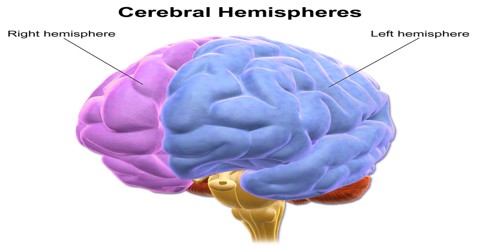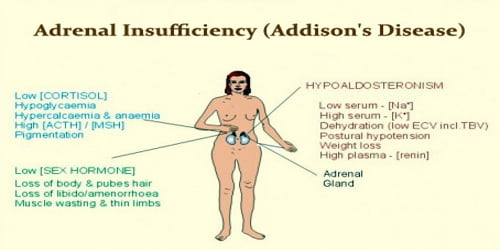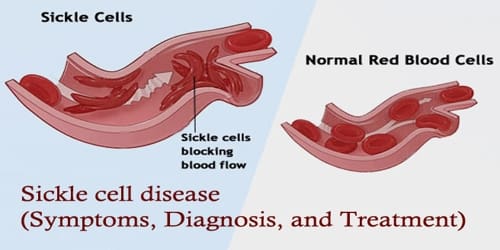Introduction of Cerebral Hemispheres
The Cerebral Hemisphere is one half of the brain, either the right or the left. The cerebral hemispheres are the highest level of the Central Nervous System. In humans, the two hemispheres are symmetrical, but not perfectly so. Making up the external part of the brain, and surrounded by a grey matter called the cortex, these hemispheres are lined with grooves that outline the different brain areas, or lobes. Each hemisphere is the site of functions controlling perception and motor function of the opposite side of the body. This is why every person is said to have a dominant hemisphere.
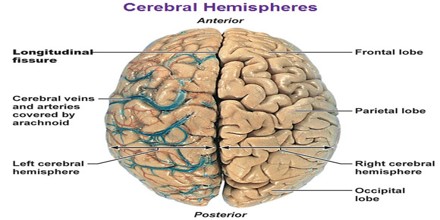
There are three poles of the hemispheres named as the occcipital pole (at the back), the frontal pole, and at the front of the temporal lobe the temporal pole. The central sulcus is a prominent fissure which separates the parietal lobe from the frontal lobe and the primary motor cortex from the primary somatosensory cortex.
Structure of Cerebral Hemispheres
The cerebral hemispheres, or right and left side of the brain, are connected by a thick set of nerve fibers called the corpus callosum. These nerve fibers transfer messages back and forth between the two sides of the brain. Each side of the brain is responsible for different functions. The corpus callosum relays information between the hemispheres to support healthy brain function.
The muscles on the left side of the body are controlled by the right side of the brain, which specializes in creativity and spatial awareness. The left side of the brain controls muscles on the right side of the body and specializes in math, logic and critical thinking.

Right Hemisphere
Functions: Responsible for control of the left side of the body, and is the more artistic and creative side of the brain.
Left Hemisphere
Functions: Responsible for control of the right side of the body, and is the more academic and logical side of the brain.
The left side of the brain is responsible for controlling the right side of the body. It also performs tasks that have to do with logic, such as in science and mathematics. On the other hand, the right hemisphere coordinates the left side of the body, and performs tasks that have do with creativity and the arts. Both hemispheres are connected by the corpus callosum and serve the body in different ways.
Function of Cerebral Hemispheres
Broad generalizations are often made in popular psychology about certain functions being lateralized, that is, located in the right or left side of the brain. These claims are often inaccurate, as most brain functions are actually distributed across both hemispheres. Most scientific evidence for asymmetry relates to low-level perceptual functions rather than the higher-level functions popularly discussed.

Perceptual information is processed in both hemispheres, but is laterally partitioned: information from each side of the body is sent to the opposite hemisphere, visual information is partitioned somewhat differently, but still lateralized. Similarly, motor control signals sent out to the body also come from the hemisphere on the opposite side. Thus, hand preference , which hand someone prefers to use is also related to hemisphere lateralization.
In some aspects, the hemispheres are asymmetrical; one side is slightly bigger. There are higher levels of the neurotransmitter norepinephrine on the right and higher levels of dopamine on the left. There is more white matter (longer axons) on right and greyer matter (cell bodies) on the left.
Connection between Two Hemispheres of the Brain
The corpus callosum is located beneath the cerebrum. The divide between the hemispheres begins with the cerebrum. The two halves of the cerebrum have slight specializations, with the right side focusing on creativity and the left side focusing on logic. The corpus callosum, located underneath these two hemispheres, allows them to communicate between one another.
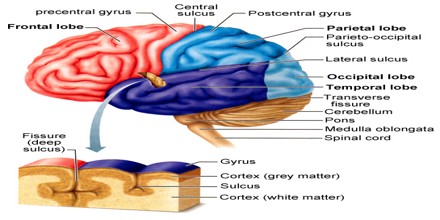
The corpus callosum also has some specializations itself. For example, in addition to relaying messages from one side of the brain to the other, Biology.About.com notes that the corpus callosum also is involved in controlling eye movement. Functions also include maintaining the balance between focused attention and arousal and in tactile localization.
The cerebral hemispheres are derived from the telencephalon. They arise five weeks after conception as bilateral invaginations of the walls. The hemispheres grow round in a C-shape and then back again, pulling all structures internal to the hemispheres, such as the ventricles with them. The intraventricular foramina also called the foramina of Monro allow communication with the lateral ventricles. The choroid plexus is formed from ependymal cells and vascular mesenchyme.
